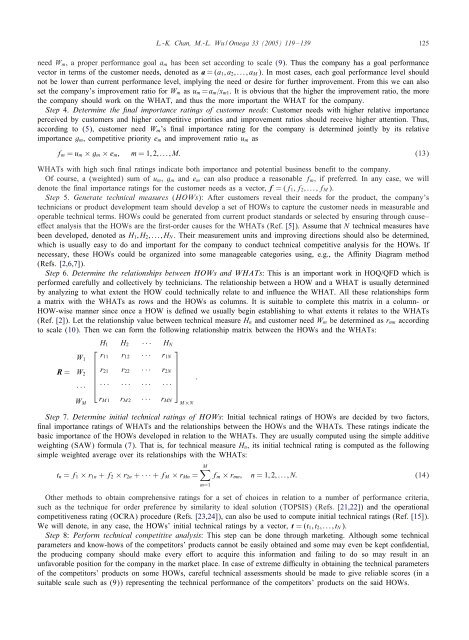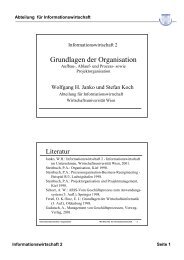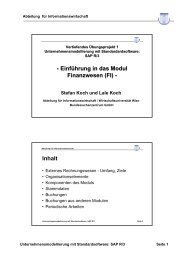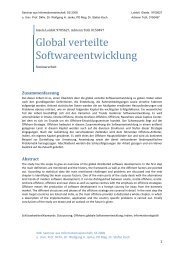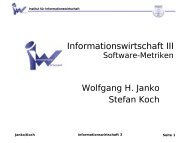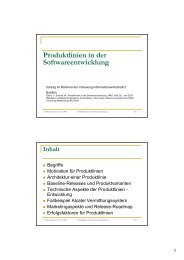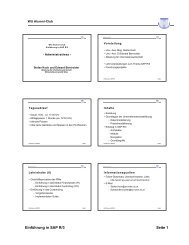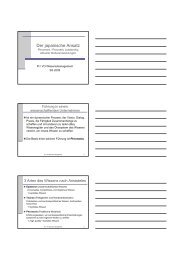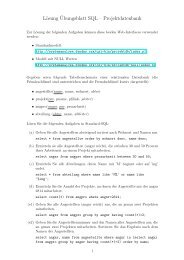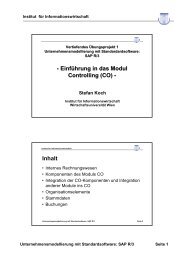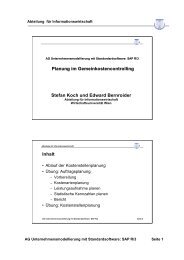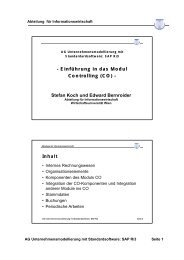A systematic approach to quality function deployment with a full ...
A systematic approach to quality function deployment with a full ...
A systematic approach to quality function deployment with a full ...
You also want an ePaper? Increase the reach of your titles
YUMPU automatically turns print PDFs into web optimized ePapers that Google loves.
L.-K. Chan, M.-L. Wu / Omega 33 (2005) 119 – 139 125<br />
need Wm, a proper performance goal am has been set according <strong>to</strong> scale (9). Thus the company has a goal performance<br />
vec<strong>to</strong>r in terms of the cus<strong>to</strong>mer needs, denoted as a =(a1;a2;:::;aM ). In most cases, each goal performance level should<br />
not be lower than current performance level, implying the need or desire for further improvement. From this we can also<br />
set the company’s improvement ratio for Wm as um = am=xm1. It is obvious that the higher the improvement ratio, the more<br />
the company should work on the WHAT, and thus the more important the WHAT for the company.<br />
Step 4. Determine the nal importance ratings of cus<strong>to</strong>mer needs: Cus<strong>to</strong>mer needs <strong>with</strong> higher relative importance<br />
perceived by cus<strong>to</strong>mers and higher competitive priorities and improvement ratios should receive higher attention. Thus,<br />
according <strong>to</strong> (5), cus<strong>to</strong>mer need Wm’s nal importance rating for the company is determined jointly by its relative<br />
importance gm, competitive priority em and improvement ratio um as<br />
fm = um × gm × em; m=1; 2;:::;M: (13)<br />
WHATs <strong>with</strong> high such nal ratings indicate both importance and potential business bene t <strong>to</strong> the company.<br />
Of course, a (weighted) sum of um, gm and em can also produce a reasonable fm, if preferred. In any case, we will<br />
denote the nal importance ratings for the cus<strong>to</strong>mer needs as a vec<strong>to</strong>r, f =(f1;f2;:::;fM ).<br />
Step 5. Generate technical measures (HOWs): After cus<strong>to</strong>mers reveal their needs for the product, the company’s<br />
technicians or product development team should develop a set of HOWs <strong>to</strong> capture the cus<strong>to</strong>mer needs in measurable and<br />
operable technical terms. HOWs could be generated from current product standards or selected by ensuring through cause–<br />
e ect analysis that the HOWs are the rst-order causes for the WHATs (Ref. [5]). Assume that N technical measures have<br />
been developed, denoted as H1;H2;:::;HN . Their measurement units and improving directions should also be determined,<br />
which is usually easy <strong>to</strong> do and important for the company <strong>to</strong> conduct technical competitive analysis for the HOWs. If<br />
necessary, these HOWs could be organized in<strong>to</strong> some manageable categories using, e.g., the A nity Diagram method<br />
(Refs. [2,6,7]).<br />
Step 6. Determine the relationships between HOWs andWHATs: This is an important work in HOQ/QFD which is<br />
performed care<strong>full</strong>y and collectively by technicians. The relationship between a HOW and a WHAT is usually determined<br />
by analyzing <strong>to</strong> what extent the HOW could technically relate <strong>to</strong> and in uence the WHAT. All these relationships form<br />
a matrix <strong>with</strong> the WHATs as rows and the HOWs as columns. It is suitable <strong>to</strong> complete this matrix in a column- or<br />
HOW-wise manner since once a HOW is de ned we usually begin establishing <strong>to</strong> what extents it relates <strong>to</strong> the WHATs<br />
(Ref. [2]). Let the relationship value between technical measure Hn and cus<strong>to</strong>mer need Wm be determined as rmn according<br />
<strong>to</strong> scale (10). Then we can form the following relationship matrix between the HOWs and the WHATs:<br />
R =<br />
W1<br />
W2<br />
···<br />
WM<br />
H1 H2 ··· HN<br />
⎡<br />
⎤<br />
r11 r12 ··· r1N<br />
⎢<br />
⎥<br />
⎢ r21 r22 ⎢<br />
··· r2N ⎥<br />
⎢<br />
⎥<br />
⎢<br />
⎣ ··· ··· ··· ··· ⎥<br />
⎦<br />
rM1 rM2 ··· rMN<br />
M×N<br />
:<br />
Step 7. Determine initial technical ratings of HOWs: Initial technical ratings of HOWs are decided by two fac<strong>to</strong>rs,<br />
nal importance ratings of WHATs and the relationships between the HOWs and the WHATs. These ratings indicate the<br />
basic importance of the HOWs developed in relation <strong>to</strong> the WHATs. They are usually computed using the simple additive<br />
weighting (SAW) formula (7). That is, for technical measure Hn, its initial technical rating is computed as the following<br />
simple weighted average over its relationships <strong>with</strong> the WHATs:<br />
M�<br />
tn = f1 × r1n + f2 × r2n + ···+ fM × rMn = fm × rmn; n=1; 2;:::;N: (14)<br />
m=1<br />
Other methods <strong>to</strong> obtain comprehensive ratings for a set of choices in relation <strong>to</strong> a number of performance criteria,<br />
such as the technique for order preference by similarity <strong>to</strong> ideal solution (TOPSIS) (Refs. [21,22]) and the operational<br />
competitiveness rating (OCRA) procedure (Refs. [23,24]), can also be used <strong>to</strong> compute initial technical ratings (Ref. [15]).<br />
We will denote, in any case, the HOWs’ initial technical ratings by a vec<strong>to</strong>r, t =(t1;t2;:::;tN ).<br />
Step 8: Perform technical competitive analysis: This step can be done through marketing. Although some technical<br />
parameters and know-hows of the competi<strong>to</strong>rs’ products cannot be easily obtained and some may even be kept con dential,<br />
the producing company should make every e ort <strong>to</strong> acquire this information and failing <strong>to</strong> do so may result in an<br />
unfavorable position for the company in the market place. In case of extreme di culty in obtaining the technical parameters<br />
of the competi<strong>to</strong>rs’ products on some HOWs, careful technical assessments should be made <strong>to</strong> give reliable scores (in a<br />
suitable scale such as (9)) representing the technical performance of the competi<strong>to</strong>rs’ products on the said HOWs.


